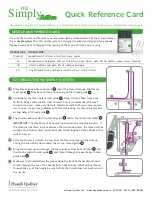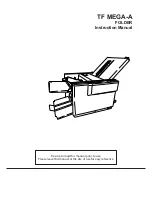
4
SECTION 2. GETTING READY
TO SEW
Connecting Machine to Power
Supply
q
w
r
t
e
For Your Safety
* While in operation, always keep your eyes
on the sewing area. Do not touch any
moving parts, such as the thread take-up
lever, handwheel or needle.
* Always turn off the power switch and
unplug from the power supply:
- When leaving the machine unattended
- When attaching or removing any parts
- When cleaning the machine
* Do not place anything on the foot control,
when not sewing.
Before Using Your Sewing Machine
Before using your sewing machine for the
first time, place a waste fabric under the
presser foot and run the machine with thread
for a few minutes. Wipe away any oil which
may appear.
Controlling Sewing Speed
Sewing speed can be varied by the foot
control.
The harder you press on the foot control, the
faster the machine runs.
CAUTION:
Before connecting the power cord, make
sure the voltage and frequency shown on
the machine conform to your electrical
power.
1. Turn off the power switch
q
.
2. Insert the machine plug
w
into the
machine socket
e
.
3. Insert the power supply plug
r
into the
outlet
t
.
4. Turn on the power switch
q
to activate the
power and sewing light.
q
Power switch
w
Machine plug
e
Machine socket
r
Power supply plug
t
Outlet
Summary of Contents for 30 Next
Page 1: ...Instruction book...
Page 34: ......







































